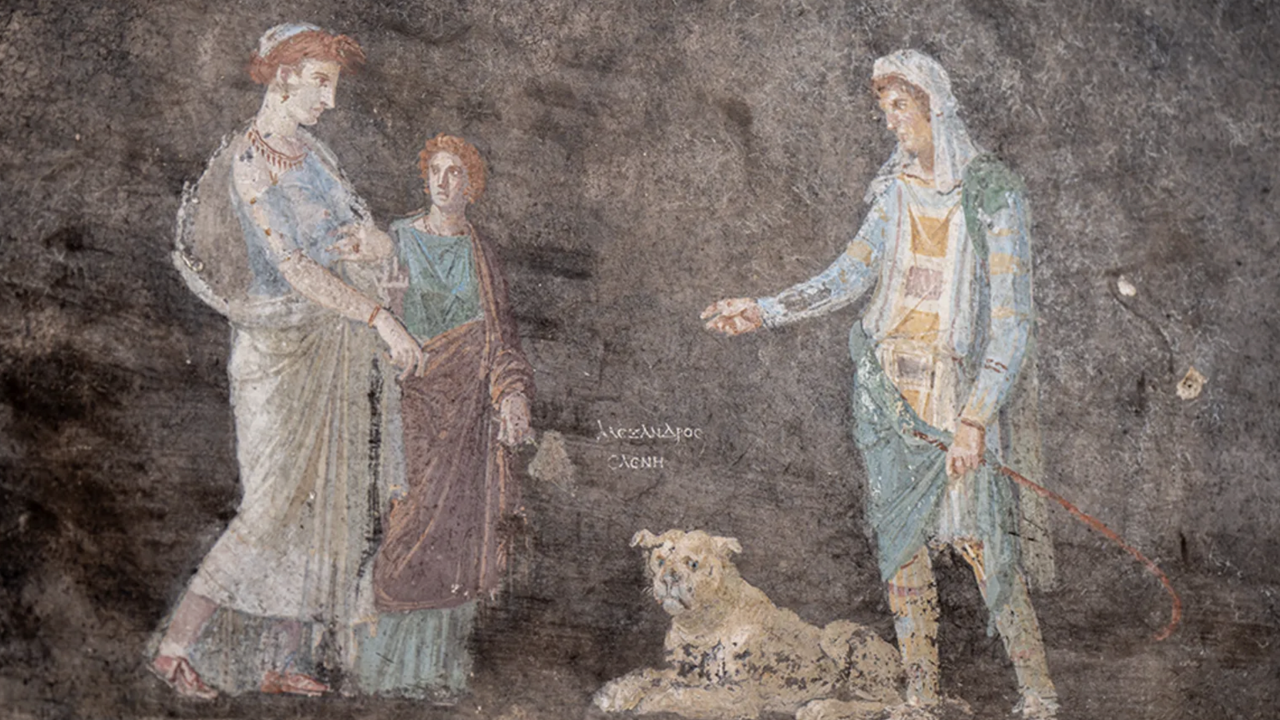Pompeii's latest discovery opens window into ancient Roman artistry
Archaeologists unearth striking frescos in Pompeii, revealing new insights into Roman mythology, daily life

Archaeologists recently unveiled breathtaking artworks in a new excavation at Pompeii, casting new light on Roman life and culture.
This discovery in the ancient Roman city, buried under Mount Vesuvius's catastrophic eruption in 79 A.D., marks a significant milestone in understanding the ancient past.
In the heart of the excavation lies the 'black room,' a large banqueting hall adorned with frescos depicting mythical Greek figures.
"The frescos are among the finest to be found in the ruins of the ancient site," say the archaeologists, as reported by BBC. The hall's walls, painted in a deep black, serve as a dramatic backdrop to the vivid scenes of Greek mythology, featuring prominent figures such as Helen of Troy.
Two main frescos are central to the black room's allure. One illustrates the god Apollo trying to seduce the priestess Cassandra, a scene filled with mythological significance.
"Her rejection of him resulted in her prophecies being ignored," the frescos suggest. This tale of unheeded prophecy leads to the second painting, where Prince Paris meets Helen, a union fated to ignite the Trojan War.
Preserving these ancient artworks is as crucial as their discovery. Dr. Roberta Prisco, chief restorer, works tirelessly, saying: "The responsibility is enormous."
Her team employs innovative techniques, such as injecting plaster glue behind frescos, to ensure these historical treasures withstand the test of time.
Beyond the grandeur of the black room, the excavation in 'Region 9' provides a glimpse into the daily life of Pompeii.
This area, a mix of a bakery, laundry, and residence, reveals the interconnectedness of ancient Roman society. Archaeologists have linked these establishments to Aulus Rustius Verus, a significant political figure, signified by inscriptions with the initials "ARV."
While some frescos in the grand residence speak of luxury, the bakery's harsh conditions paint a starkly different picture of Roman life.
The bakery, where workers likely lived in poor conditions, stands in contrast to the adjacent luxurious dwelling, highlighting the societal disparities of the time.
Source: Newsroom






